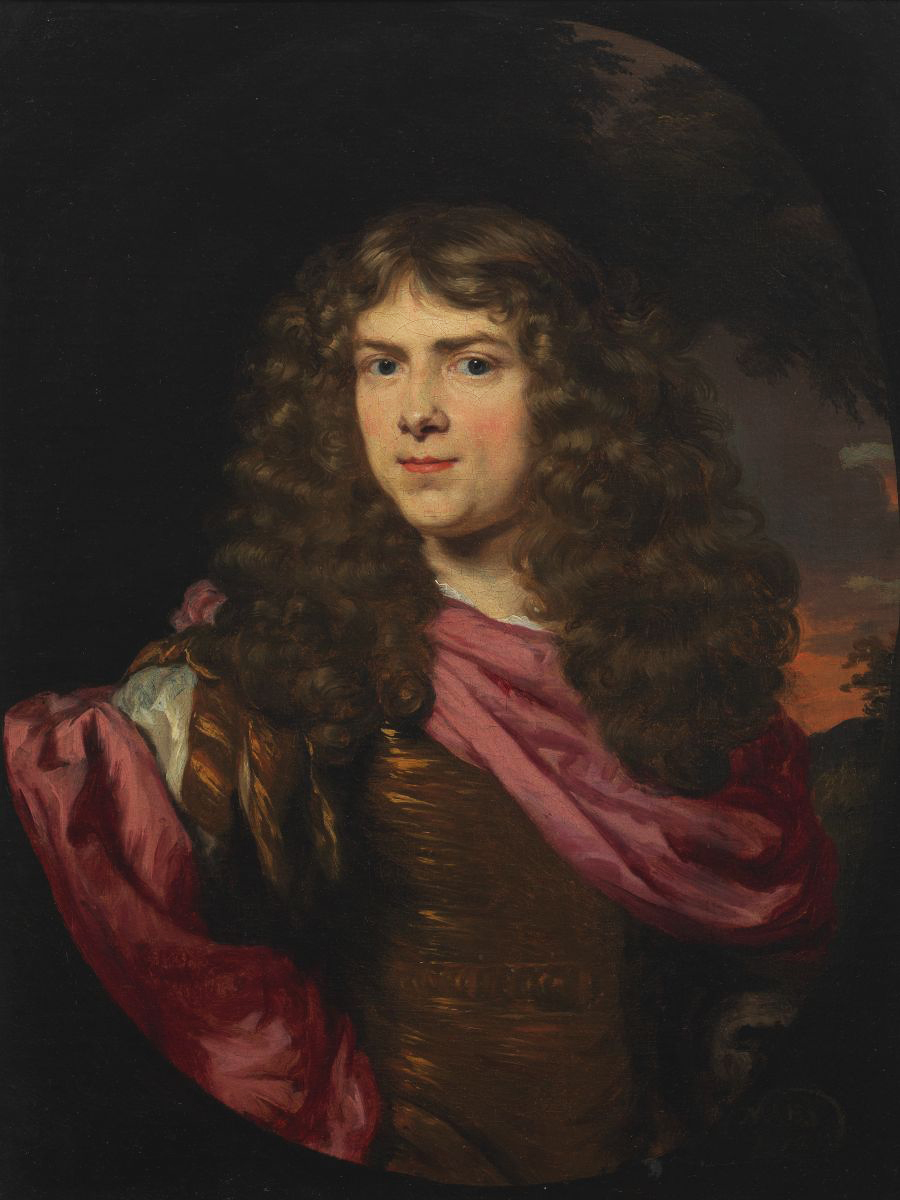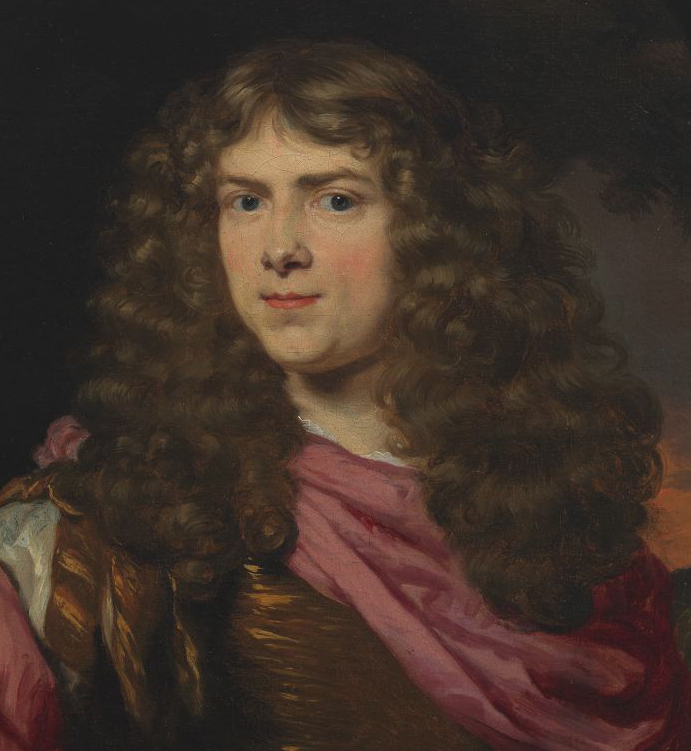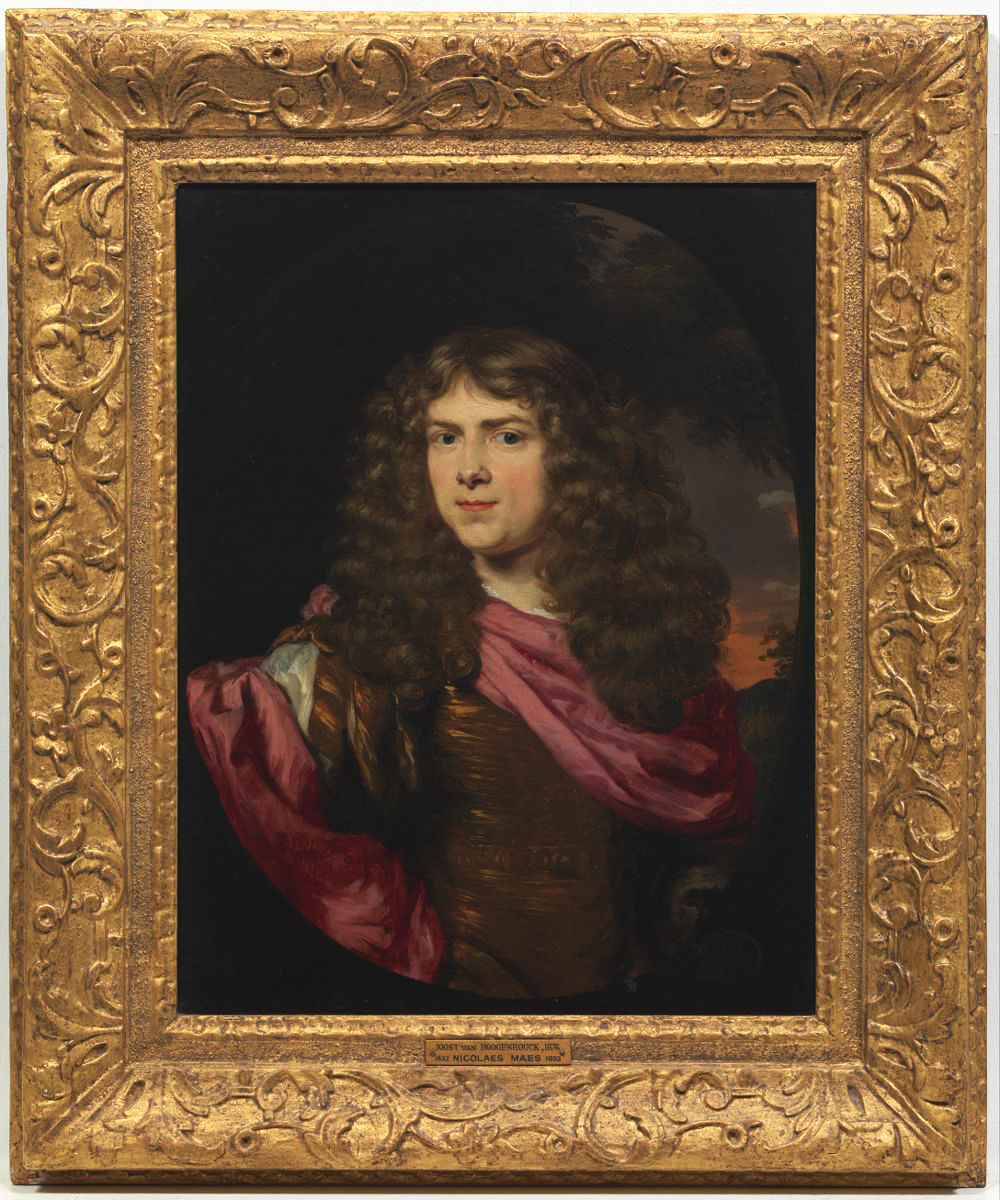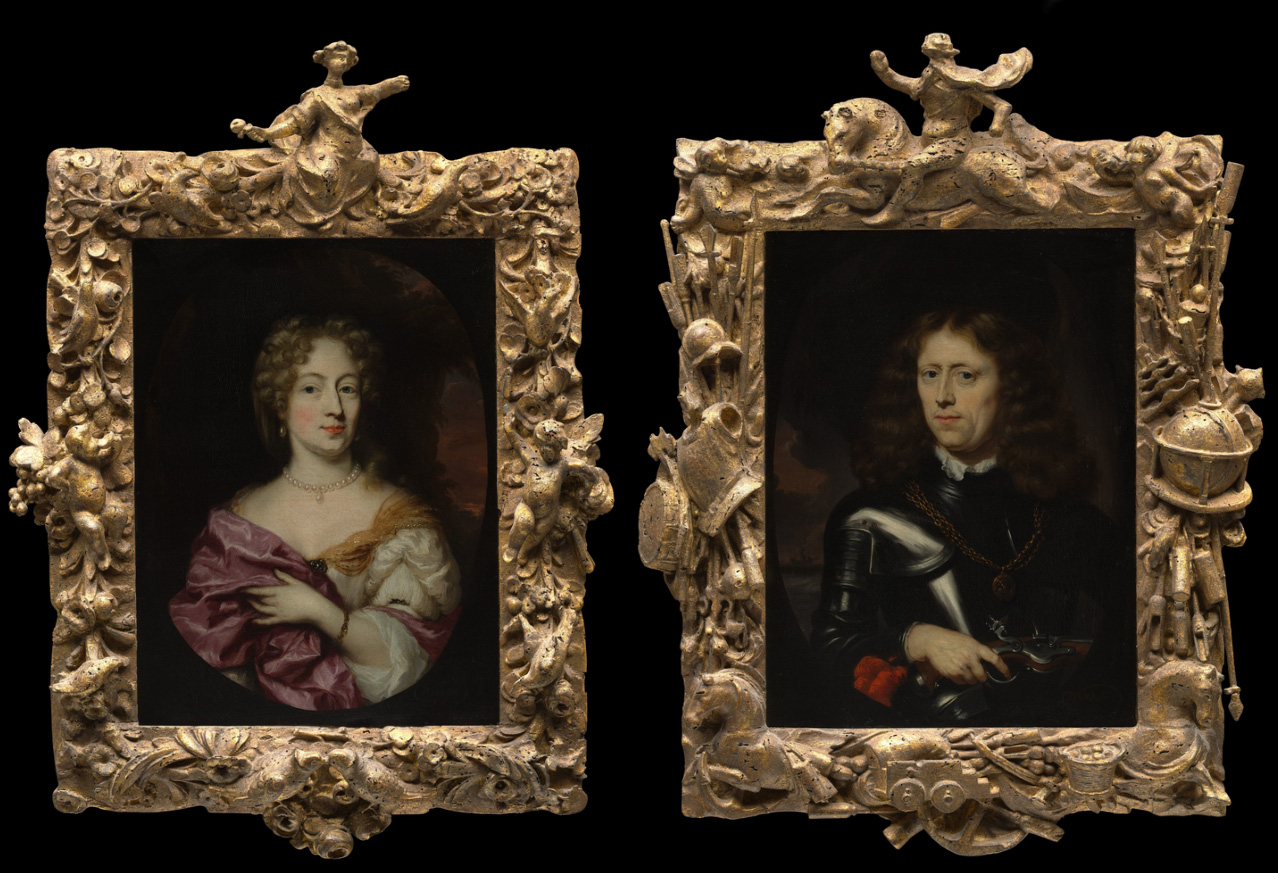NICOLAES MAES (Dordrecht 1634 –1693 Amsterdam)
Nicolaes Maes (Dordrecht 1634 – 1693 Amsterdam)
Portrait of Joost (Justus) van Hoogenhouck (1644–1714) (offered together with Portrait of Anthonia des Quiens (1646–1676))
Oil on canvas, 43 x 33 cm (16.9 x 13 inch); presented in carved and gilt modern frames of 18th-century model
Signed and dated 1676 (lower right)
Provenance
J.C. van de Blocquery, Oosterbeek; anonymous sale, Dordrecht, Mak, June 1923, lot 1217; with dealer Van Wageningh, The Hague; Leger Galleries, London, 1974; acquired by private collector until sold, Sotheby’s, New York, 2 June 1989, lot 41; The Harry R. Calsing Trust, Cleveland Ohio
Literature
~Th.H. Lunsingh Scheurleer, Het Rapenburg: geschiedenis van een Leidse gracht, Leiden 1987, vol. III, p. 127
~León Krempel, Studien zu den datierten Gemälden des Nicolaes Maes (1634–1693), Petersberg 2000, cat. nos. A174 and A174A, figs. 256 and 257
***
Before studying painting with Rembrandt van Rijn in Amsterdam, probably between about 1648 and 1653, Nicolaes Maes learned to draw from a local Dordrecht master.1 Subsequently, he returned home to embark on an independent career. By the 1650s he had developed a reputation for painting the intimate life of women and children; his finest pictures capture aspects of Rembrandt's tenderness and intimacy. Maes's scenes often include vignettes such as a cat stealing the dinner of an old woman as she prays. By representing an interior as a suite of rooms rather than a three-wall, one-room enclosure, Maes had great impact on the Delft painters Johannes Vermeer and Pieter de Hooch.
About 1660 Maes began specializing in portraits, becoming wildly successful by abandoning his Rembrandtesque style for the bright colors and studied elegance of Flemish artists such as Anthony van Dyck. Arnold Houbraken's 1721 biography described the transformation: Maes "learned the art of painting from Rembrandt but lost that way of painting early, particularly when he took up portraiture and discovered that young ladies preferred white to brown."
Joost van Hoogenhouck married Anthonia des Quiens of Leiden on 11 January 1667. He was a Knight of the Holy Roman Empire and served as Councillor, Alderman, and Burgomaster of the city of Leiden, and was a Governor of the West India Company of Amsterdam. It is comparatively rare for pendant portraits by Maes to have remained together, and even less usual that the identities of their sitters have been preserved. This pair can for instance be compared to the portraits of Admiral Jacob Binkes and his bethrothed Ingena Rotterdam in the Metropolitan Museum in New York, which are identical in size and were also painted in 1676 (fig.).2
These painting are entered in the databases of the Rijksbureau voor Kunsthistorische Documentatie (RKD) in the Hague under artwork nos. 123364 and 123365.
SOLD TO A PRIVATE COLLECTOR
1. For the artist, see León Krempel, Studien zu den datierten Gemälden des Nicolaes Maes (1634–1693), Petersberg 2000 and Ariane van Suchtelen a.o., Nicolaes Maes, exh. cat. Mauritshuis, The Hague 2019.
2. Both canvas, 43.8 x 33 cm; signed and dated 1676; inv. nos. 11.149.2 and 11.149.3; formerly in the collection of J. Pierpont Morgan, presented to the museum in 1911; Walter Liedtke, Dutch Paintings in The Metropolitan Museum of Art. New York, 2007, vol. 1, pp. 446–49, no. 114, colour pl. 114.



